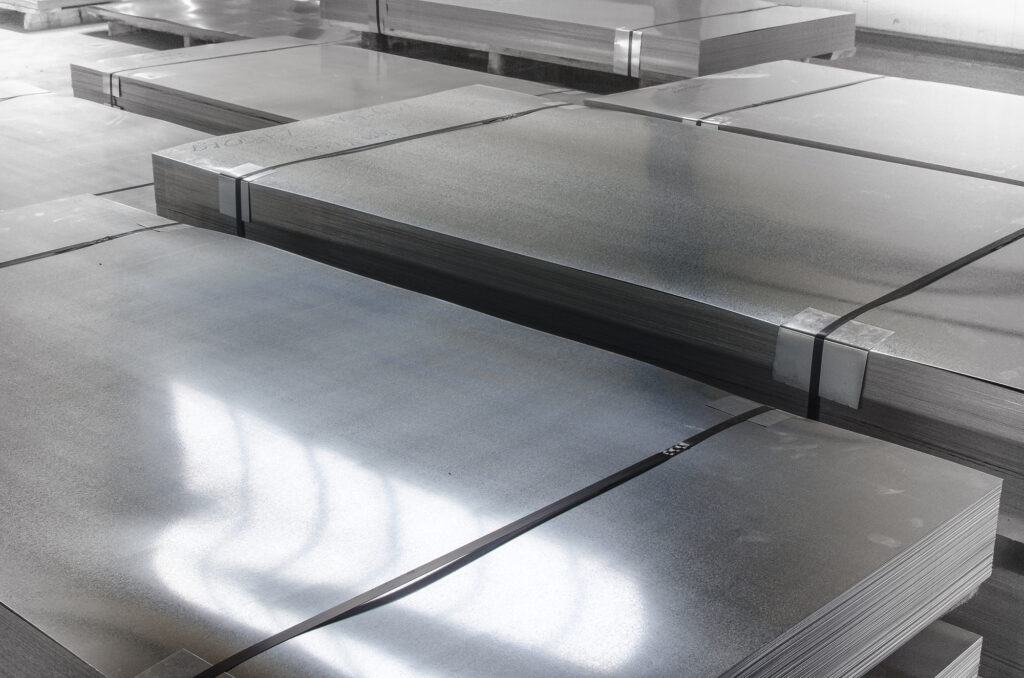With construction projects commencing towards the end of 2020, so too has steel manufacturing, but it’s accompanied with higher steel pricing. The construction industry now faces a significant challenge as steel prices are rising.
Between 2014 and 2019, annual steel consumption in the US exceeded 100 million metric tons. Although there are many uses for steel, the construction industry is the primary driver for such consumption. This is why as construction projects slowed down or even halted and postponed due to the COVID-19 pandemic, the impact on the steel sector was significant.
Steel is an essential component in construction because it is tensely strong, cost-effective, binds well to concrete, and its thermal expansion coefficient is similar to concrete’s. Its applications come in the form of structural sections and reinforcing bars used to strengthen concrete. As such, the steel and construction sector enjoy somewhat of a mutually symbiotic relationship, but when disruptions in one occur, the other is also significantly affected.
What’s Pushing Steel Prices Up?
Traditionally, the steel market is known for its volatility. Any dramatic or unsettling changes can cause sudden steep rises in prices. Due to factors such as disrupted supply chains and COVID-19 restrictions, many construction projects were halted. As the demand for construction reduced, so did the demand for steel. In turn, steel manufacturers halted or significantly reduced production.
Though the year 2021 seems positive for the construction industry, steel prices, at least in the first quarter, will pose a significant challenge. Over the past few months, halted construction projects have restarted, and those scheduled to begin have commenced as planned. This has translated to a significant rise in demand for steel that exceeds the current supply. As a result, steel prices have been on a steep upward trajectory over the past few months. A trend that is projected to continue well into 2021, according to a S&P Global Platts survey.

Impact of Steel Imports on Prices
Anytime that there is a shortage in steel supply, large consumers turn to foreign suppliers to offset the difference. Given that the local market challenges are a result of the global pandemic, foreign supply is not a reliable option as mills across the globe face similar challenges.
Some of the major foreign suppliers of steel in the US are China and Brazil. With recent spikes in COVID-19 cases in Hebei province, China’s primary steel production zone, stringent measures are poised to be implemented, further affecting steel supply. Another steel production zone that has been affected by lockdown is Shijiazhuang. On top of this, steel production in China will be further impacted by the Lunar New Year.
At present, steel imports from Brazil have reduced significantly, and prices in other regions such as Germany and Turkey are also soaring. With such conditions, turning to foreign suppliers may not meet present demand, and even if it can, it does not make economic sense.
How Rising Steel Pricing Affects the Construction Industry
Construction projects are run with specific timelines and budgets from the onset. Any deviation on either factor can have significant effects on the success of the project and profitability. This is why pre-construction meetings are held, and budgets for projects are created based on feedback from contractors and suppliers.
As one of the major raw materials, steel prices and availability will affect a contractors’ ability to complete projects on time and within budget.
The primary concern for contractors surrounding rising steel prices is that revenues from projects will be impacted. Whereas it is a genuine worry, the biggest risk they stand to face is cash flow constraints. If steel prices continue to rise and they are unprepared for the additional expenses, steel contractors may end up in a precarious situation and potentially introducing risks to projects.
Another challenge that comes with cash flow constraints is project delays as contractors seek solutions. This will translate to dissatisfied clients and potentially increased costs later. Inability to address these challenges will translate to the loss of contracts and the revenue they may bring.
When it comes to bidding on new projects, the current price volatility makes it difficult to anticipate the price of steel for the duration of construction projects. The price may be significantly higher six months down the line than it is today, and because of this, steel contractors are committing to given prices for shorter than normal periods, creating uncertainty for developers, owners, and general contractors.

Preparing for Rising Steel Prices in 2021
In a sector that is projected to thrive in 2021, rising steel prices seem to be the main thorn. However, it is one that can be addressed with the right strategy. As a developer, owner, or general contractor, it is recommended to include cost contingencies in initial cost budgets to account for price volatility while maintaining communication with steel contractors and suppliers. This will cushion you from budget constraints, allowing your project to progress with fewer disruptions.
More importantly, with many factors influencing construction projects’ success, it is essential to arm yourself with insight specific to your project. Build Analysis is a company that provides pre-construction analysis giving you a better glimpse of potential risks. Reach out to us today to gain project-specific insight that increases the chance of success.
